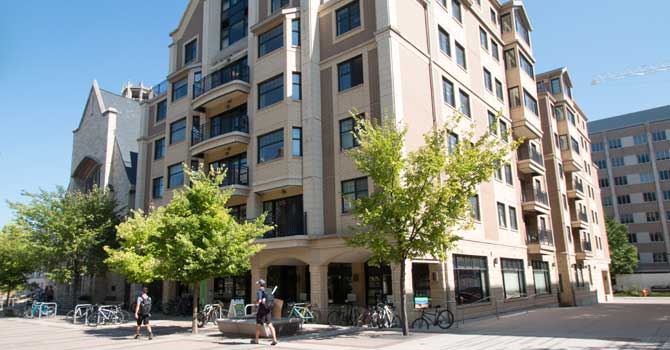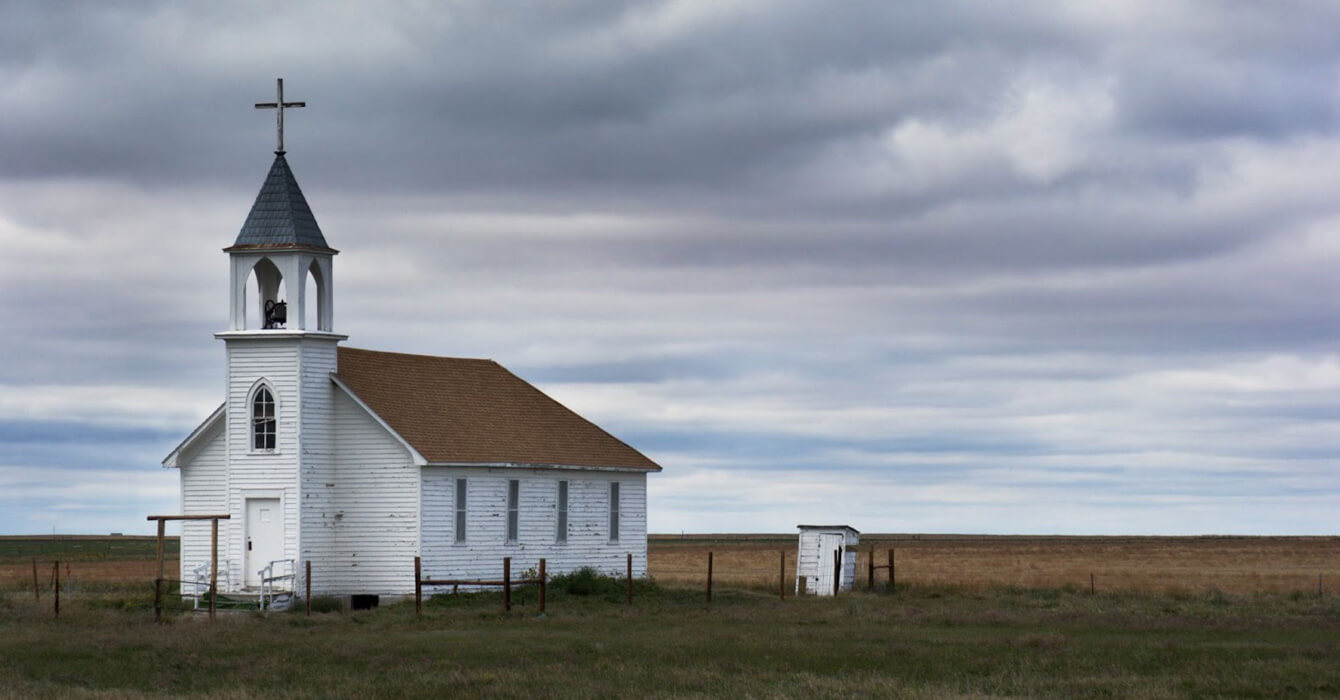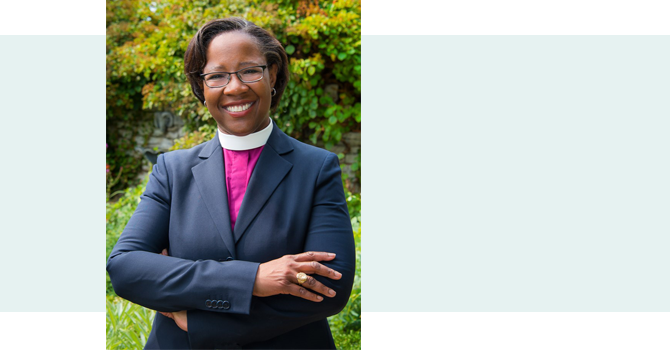It’s not easy to be optimistic about the church these days. But Mark Elsdon is working on it.
In his book “We Aren’t Broke: Uncovering Hidden Resources for Mission and Ministry,” he argued that, well, the church isn’t broke.
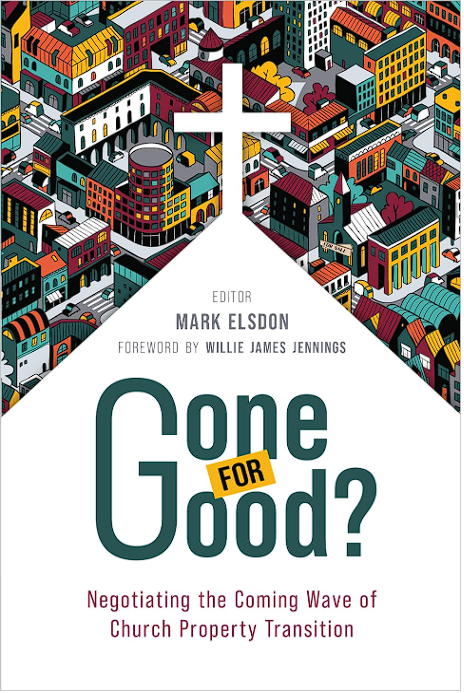
In his new book, “Gone for Good? Negotiating the Coming Wave of Church Property Transition,” he makes the case that this moment poses a unique opportunity for the church to make a difference. As congregations disperse the enormous real estate holdings of the church, Elsdon sees a chance for renewal.
If congregations think of their buildings and land as assets they are stewarding rather than possessions they own, that mindset can help them transform church spaces for the community’s well-being, he said.
“Gone for Good?” is a collection of 16 essays by practitioners in many fields that addresses the question of what happens to church property when a church closes. At its core is the argument that property should be viewed as neither an albatross nor a cash cow but rather an asset that should be thoughtfully handled and used for good.
And there are likely to be a lot of property transfers in the coming years: as many as 100,000 buildings and billions of dollars in church-owned property are expected to be sold or repurposed by 2030, according to the book.
“There’s so much opportunity to think about those assets being opportunities for God’s mission to flow forth into our neighborhoods,” said Elsdon, who is ordained in the Presbyterian Church (U.S.A.) and holds an MBA from the University of Wisconsin.
If the many churches across the country that are likely to close in the coming years simply sell off their buildings and land one by one, driven only by the market, he said, “we’re going to look back and say, ‘Wow, what a huge loss of spaces that were for the social good.’”
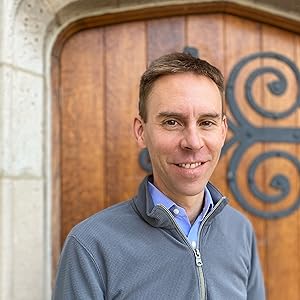
Elsdon is the executive director of Pres House, a combination church, campus ministry and seven-story apartment building on the University of Wisconsin-Madison campus. He also is a co-founder (with Shannon Hopkins) and a director of RootedGood, a nonprofit that empowers institutions, social enterprises and entrepreneurs to create systemic change.
The book came out of a Gone for Good symposium hosted by Laity Lodge and the H.E. Butt Foundation in October 2022. Elsdon spoke with Faith & Leadership’s Sally Hicks about his vision for church property transition. The following is an edited transcript.
Faith & Leadership: One of the things I found interesting in the book was your sense of this as a moment of opportunity. In the foreword, Willie James Jennings writes about “a new possibility of forming life in place.” This book takes a practical approach, but there’s also a big vision for it. What is that vision?
Mark Elsdon: I’m interested in this idea that you highlight: thinking about buildings and land that churches have stewardship over as missional opportunities. Not simply vessels for a congregation, but missional, in terms of the impact they can have on the community.
In this moment of transition around church buildings and land and their use, it’s a particularly important moment to recognize the role they play in the community.
Church buildings and land are right in the middle of it all, and they’re everywhere. I think this is really critical. They’re in every city, village, town, of every size, everywhere in the nation. There’s nowhere they’re not — and there’s nowhere that they’re not changing, either.
I’m trying to be a bit reflective about that. What is the witness, the opportunity for the space that I think churches have been given the chance to steward? What’s the opportunity in the middle of neighborhoods all over the country to be those sorts of places?
It’s not that dissimilar from my previous book, where I was arguing the same thing with regard to our money. But it’s these assets that have been viewed as simply transactional, or have been actually held too tightly. Not for the good, not in a generous way, but just like, “This is ours.”
F&L: Talk a little bit about the scale of both the concern and the opportunity here. Because it might be a once-in-forever kind of thing. It’s a real wave, right?
ME: Yes. The clunky phrase I used was a “once-in-many-generations” change. Because when this stuff changes over, it’s not going back.
I like to bring it down to the scale of whatever people’s familiarity is. For example, in Madison, where I live, I use 40 out of 100 [closing]. Imagine 40 properties all over the city, everywhere — on busy streets and tiny neighborhoods, everywhere — 40 out of 100, 40% of them, closing or going empty or being repurposed.
We vote in Madison in churches. I don’t know where we’d find 40 [new] polling places. Not to mention the spiritual impact that has in the community.
It’s not just about the church. My real hope, too, is that city municipal folks will take notice, because there’s a chance to incentivize or disincentivize how this trajectory goes.
If we just let it unfold purely according to the market, just one by one, I don’t think it’s going to end real well. I think we’re going to be disappointed.
And now they’re what? Either there’s a fence around them because they’re a landmark building and you can’t do anything with them or they’re just high-end condos.
Robert Jaeger’s chapter on the Halo study found that 3.7 million people visited the 90 churches [in the study] over a year and only 9% of those visits were for worship. The other visits were for something else, often community or educational programs — food pantry, voting, Girl Scout meeting.
F&L: What do you think will move people from the mindset of crisis and worry to this sense that this is a time of unique opportunity?
ME: There is a great deal of loss. We have to recognize that this is indeed happening and is quite hard and sad, especially if you are in a church that is selling, which many people are. I never want to put this sort of glossy sheen over it, “Oh, it’s all going to be fine.”
But the Christian faith is one of death and resurrection, of death and new life, and there’s a sense that there is something beyond the next step. I don’t believe for a second God’s declining or God’s going anywhere. It’s just that the structure we’ve created that is the American church and all of our associated property, frankly, is going to change.
I do see, often, people in churches are intrigued by the question of legacy. I will often ask church members who are considering what to do with their property to envision themselves coming back to that piece of land 50 years from now. Fifty years is past the life of pretty much everyone in the room.
We are the stewards that will shape what happens 50 years from now. We can say, “Well, we’ll just let whatever happens happen. I don’t really care. As long as I have my funeral here or as long as I have my children’s wedding here, I’m fine with it.”
But if we start to envision what really is going on in this corner of our city or of our neighborhood or of our county or whatever it might be in 50 years and ask what can we be involved in right now that will lead to beautiful things happening on that land in the future, that sometimes helps.
F&L: You stress that congregations need time to envision something different. Why is that important, and why is that so hard?
ME: I just got a message today from a congregation seeking help that has 18 months of money left, and they want to do a complete redo of their whole property. And the truth is, you can’t do it in 18 months. This is not quick work.
F&L: We recently did a story about a church that wasn’t closing, but they were doing affordable housing, and it was a vision 20 years in the making.
ME: Pres House was an idea from the 1920s. It was 80 years. That’s extreme, of course. But to do the work well, it takes time. Time to listen to your community, to do the kind of discernment work that really leads to good outcomes. I think we underestimate that.
Sometimes there’s a resistance to accepting where we are, and there’s a sense of, “We can just do one more year like this, and we can just do one more year like this.” Eventually, the “one more year”— that’s the last of them. It’s hard.
Part of the reason I did the book, frankly, is to try to normalize that conversation a little bit, to try to help. Maybe it’s overwhelming, but maybe it’s a little bit of a comfort to know that there are 99,000 other churches facing the same thing. We’re not alone when we’re facing it, and it isn’t about us.
I always encourage people to think about it far earlier than they want to. To think of it more as, “What is this resource that we have to steward out to the world?” And to have those conversations going on all the time, so that when the moments do come that the change is needed, it’s not quite so revolutionary or hard to face.
F&L: Besides time, what are other key aspects of this process?
ME: Funding is definitely an issue. Funding on multiple levels — shorter term, pre-pre-development, pre-development funding, funding to do the discerning, to do the accelerator courses, to do the kinds of stuff that get people thinking differently.
There are a lot of financial resources, at least in the mainline church world, that could be used for investment money or for loans, for other funds to be pulled out of traditional investments and put to work in financing some of the development. That’s needed as well, especially if you’re going to do something interesting.
There’s a reason that affordable housing is so hard to do. It’s not easy, because you have to subsidize it. It doesn’t work on a purely market-driven method. But we also have money in the church that we could use to support some of those projects.
This pre-pre-development work is what RootedGood is working on a lot right now. We have our Good Futures Accelerator, which is a nine-month course for congregations to think about who they are, who their neighborhood is, to come up with ideas, to get creative, to test some demand and to do a space audit in their building.
We need more of that happening from more directions. There are nowhere near enough consultants, for example, to do one-on-one consulting for the number of churches that need to address this stuff. So we need to think about much more scalable, different ways of meeting that need.
Obviously, also, I talk about hope. I mean, hope is key. So again, while recognizing those sad realities, what will really move us is hopefulness that there is opportunity to do new good stuff, which I truly believe there is.
F&L: Philanthropy and government funding are two other sources you address.
ME: In my area, Madison, Wisconsin, there’s not a great deal of trust between cities and faith communities. That may be different in other parts of the country. Similarly with philanthropy, they just don’t do it. They don’t often give to churches directly.
But what this property transition moment allows for is different ways of structuring those relationships. And I would say, very broadly speaking, it’s different opportunities to, again, live out the Christian faith much more broadly and bring the gospel into people’s lives much more broadly.
As a practical example, I’m seeing a lot of churches starting nonprofit organizations that are not the church; they’re affiliated with the church. Then they have an opportunity to seek funding from foundations and funders through grants that wouldn’t go to a church.
Similarly, cities and planning departments are much more amenable, often, to working with development that’s multiuse, that isn’t just simply a traditional church worship space. So in both cases, it’s this opportunity to really broaden the network and the connection, and people all working together.
F&L: The chapter by Jim Bear Jacobs, citizen of the Mohican Nation, suggests an idea I’d never heard of before: returning the land to Indigenous tribes or organizations.
ME: I would not have published the book had I not been able to put a chapter like that in there. It was really important for me. This is a trickier, more sensitive subject for people.
I think you could argue theologically that we’re stewards of the land and that God has given us the opportunity to make use of it. But you could also argue very much historically and ethically that it was taken and so it really wasn’t ours to begin with anyway.
If we’re the church and we care about people and we care about our communities and we care about big questions, then I think we have to recognize that we’re monetizing land that was taken.
I think we have to think about that, recognize that, be aware of that, before we go ahead with it as if it’s ours. What’s our position with regard to church buildings and land? If we have a chance to right some wrongs from the past by returning it, it’s a form of reparation, a form of atoning for past sin. Why not consider that as an option?
There are lots of ways in which we can be more generous with what we have. Why do we need to hold on to it, especially if it’s not being used?





